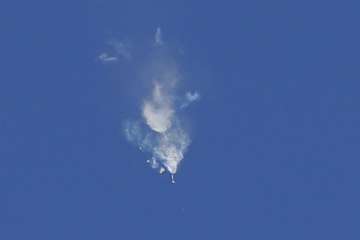The booster rocket failure that forced an emergency landing for two astronauts headed to the International Space Station was the first launch accident for Russia’s manned-space program in 35 years. But several launches of unmanned Progress cargo ships have not gone as planned in the past decade.
The astronauts, a Russian and an American, were reported safe, but the failed launch on Thursday throws off the schedule for sending crew to the International Space Station. Russia’s Soyuz capsules currently are the only way for humans to reach the orbiting laboratory.
The next manned launch was planned for December. Russia has suspended manned flights pending an investigation of the latest failure.
A look at past failures of Russian space launches:
Dec. 1, 2016: A Progress ship carrying food, fuel, air, water and other supplies failed to reach orbit after launching from Russia’s space complex in Baikonur, Kazakhstan. It separated from the third stage of the rocket early and fell to Earth in Russia’s Tuva region.
April 28, 2015: A Progress ship reached low Earth orbit, but it was spinning and could not be controlled. It burned up while re-entering the Earth’s atmosphere over the Pacific Ocean on May 8.
Aug. 24, 2011: An onboard computer terminated a Soyuz flight about five minutes into the launch after detecting an engine failure, resulting in the loss of a Progress ship. Russia’s space agency Roscosmos said a blocked fuel duct was at fault.
Sept. 27, 1983: A Soyuz rocket that was to carry Vladimir Titov and Gennady Strekalov to a Salyut space station caught fire in the final seconds of the countdown at Baikonur. A “launch escape system” — a rocket mounted above the capsule — pulled the capsule away from the rocket seconds before an explosion. Titov and Strekalov landed several kilometers away, apparently uninjured despite being subjected to intense G forces.
April 5, 1975: Oleg Makarov and Vasily Lazarev were about four minutes into their flight to a Salyut space station when the second and third stages of the booster rocket failed to separate correctly. The space capsule landed near the Chinese border in deep snow about 20 minutes after launch.
